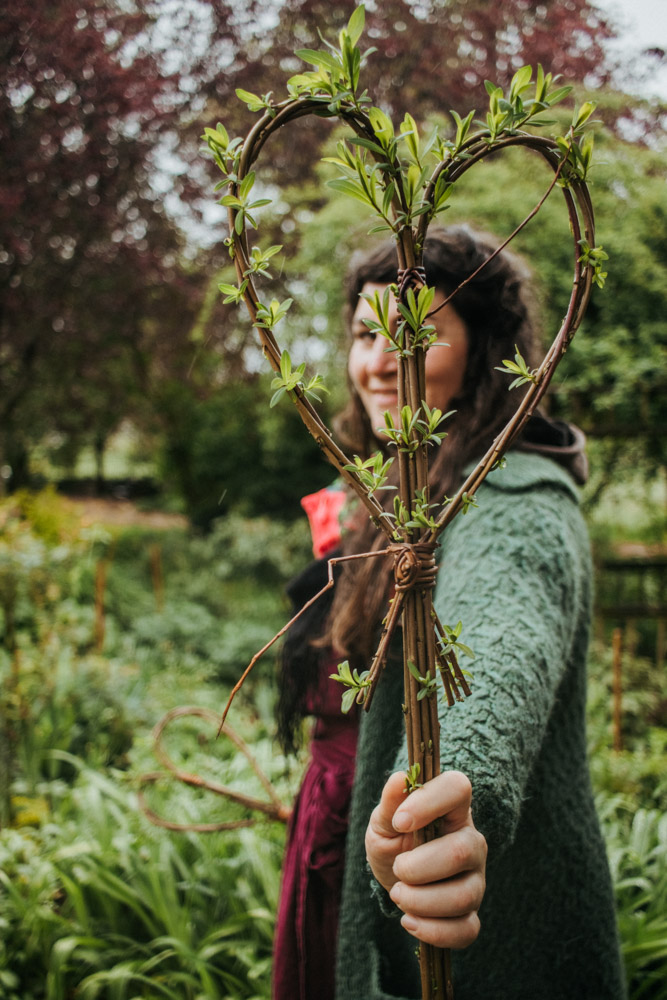A PROPOS / ABOUT
English version below
BONJOUR À TOU.TE.S!
Je suis Isabel, je suis vannière franco- britannique installée en Bourgogne depuis 2017.
Nourrie de la culture familiale pour l’artisanat d’art dans ma famille d’artisans potiers et tisserands britanniques, mon intérêt pour l’art et les “artefacts” m’ont mené faire des études en histoire des arts et en archéologie. Après plusieurs années d’études à Perpignan, Barcelone et Montpellier je suis sortie avec une licence en histoire des arts et archéologie, une maîtrise en gestion de l’art contemporain et un master en archéologie préventive. J’ai travaillé quelques années en tant qu’archéologue de terrain dans le sud de la France et ai eu la chance de participer à des projets de recherche à l’internationale mais aussi en parallèle j’ai exploré le travail du bois, la tapisserie d’ameublement et la couture. Au bout de quelques années ma quête d’indépendance et de lier savoirs faire, patrimoine, artisanat contemporain et retour à la terre m’ont porté vers la vannerie et l’osiériculture, un jour où je taillais l’osier au jardin. Je me suis formée à Fayl Billot (52) à l’Ecole Nationale d’Osiériculture et de Vannerie; la dernière institution dédiée entièrement à l’apprentissage de cette culture et de ces savoirs faire en Europe! C’est à l’issue de ces dix mois passés dans l’atelier auprès d’un grand maître vannier (MOF) et de copains de tous horizons venus faire la même chose que moi que je me suis installée dans la région où j’ai grandi pour devenir vannière. Je travaille depuis une bâtisse isolée en plein cœur du bocage nivernais et combinais jusqu’à présent travail artisanal et travail de guide archéologique au site de Bibracte.



Hello all!
I’m Isabel, a french-british basketmaker living in Burgundy, France since 2017.
Coming from a British arts and crafts background, my first broad interest for artefacts lead to study art history and archaeology. After sevral years studying in Perpignan, Barcelona and Montpellier leaving with a BA in art history, an MA in contemporary arts curatorship and an MA in field archaeology, I worked as a commercial archaeologist in the south of France for sevral years following through various international projects from my university days (research excavations in the south of France but also in Syria and Armenia). In between digs and projects I went on upholstery, woodwork and sewing courses… and a basketry course. After a few years of living from one project to the next without knowing quite what or when the next would turn up, every aspect of basketry drew me in: the freedom of being self employed, the ecological aspect of growing your own materials, the heritage side of keeping up ancient craft but also fitting into a contemporary crafts scene was particularly appealing. I trained at the Fayl Billot school of basketry and willowgrowing in the east of France, a unique and ancient institution left over from the XIXth century humanitarian days when giving skills to the workers was giving them freedom, the only school in Europe entirely dedicated to basketry and willow. I was taught by J-P Bavoillot master basketmater along with 7 other amazing characters ready to put everything on hold for a year commit to learning the bases of the craft and start an new life. I moved back to the Nièvre, a very rural part of Burgundy where I grew up, and became a basketmaker and archaeological guide for the local museum of Bibracte.
L’ART LE PLUS VERT
Un des attraits principaux de la vannerie outre l’esthétique ou le sens patrimonial des gestes et savoirs faire, c’est l’aspect écologique de la démarche. Avant l’hypercapitalisme et la dépendance totale aux produits issus du pétrole tous les emballages étaient réalisés en fibres végétales et de très nombreuses en osier! On remet en question le plastique depuis quelques années autant sur des questions de santé que des questions de pollution à l’échelle mondiale. C’est donc le moment idéal de re-découvrir la vannerie et sa matière première, l’osier!
L’osier est une ressource biodégradable inépuisable puisqu’elle est est autochtone à l’Europe tempérée et n’est que la pousse de l’année du saule: son impact écologique est nul et après de nombreuses années de bon et loyaux services tout objet en osier est compostable. En attendant de cultiver mon propre osier, me fournis chez des petits producteurs d’osier de Haute Marne et de Touraine (et exceptionnellement en Angleterre) qui pratiquent une osiériculture raisonnée.

THE GREENEST CRAFT
One of the main attractions of basketry appart from a quest for beauty, form, natural textures, art mixed into utilitarian pieces, heritage and contemporary craft(wo)manship is definitely it’s absoute sustainability. Before hypercapitalism and it’s dependance to petrol and plastic most wrapping materials were plant fibre based, and many were made of willow!
We are only now starting to question plastic because for the last few years we’ve realised it’s the cause of major pollution and health problems on the planet. It’s never been a better time to rediscover basketry and the wonders of willow!
Willow is a sustainable compostable material that has infinite potential as it’s native to temperate Europe, and grows naturally on most terrains; we only use year old shoots for basketry rods and cutting them encourages vigourous regroth!… you know how big companies “compensate” their carbon emissions by planting trees? Well, basketry starts in the willow patch. A willow basket is carbon negative, and sustainable as an object too; kept away from woodworm and damp a basket can last generations and can then be composted at the end.
Until my own willow patches start produicing enough for my work I’m buying it from small family owned willow farms across France (Haute Marne and Touraine) and very exceptionally England.
